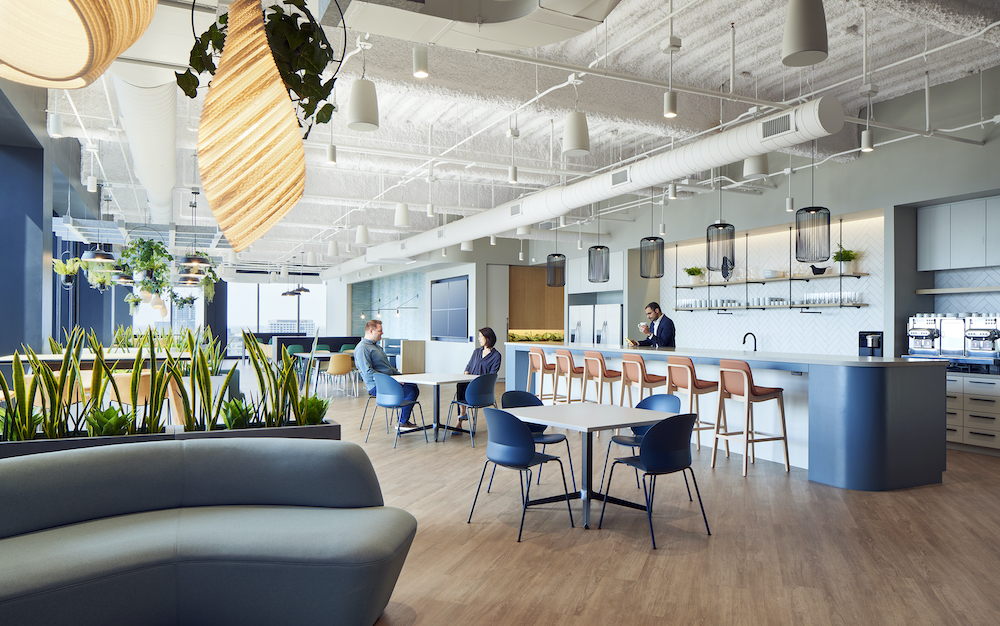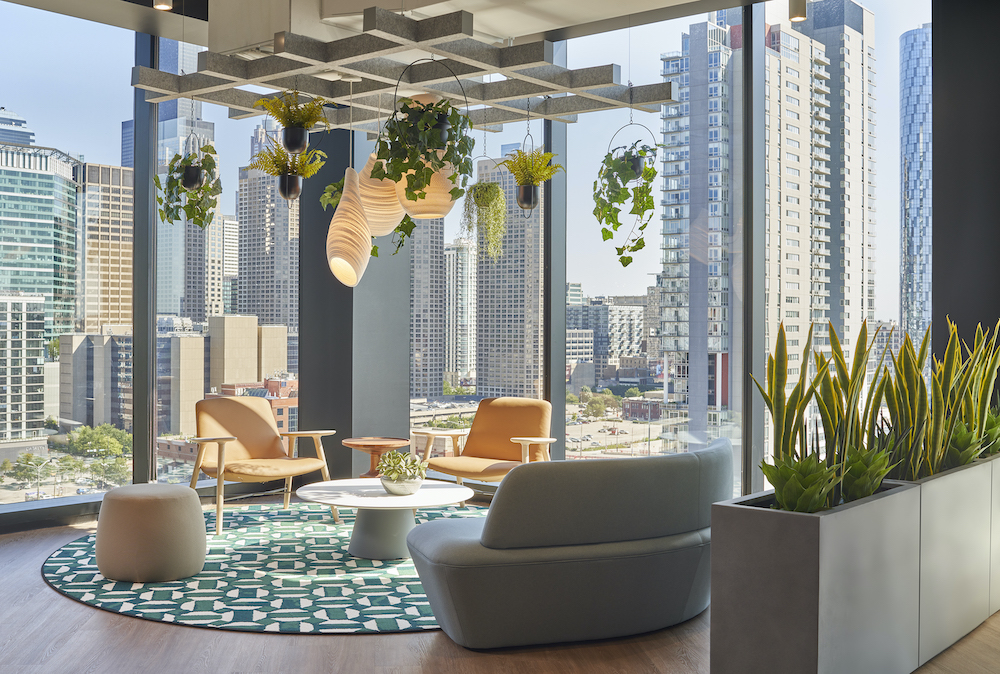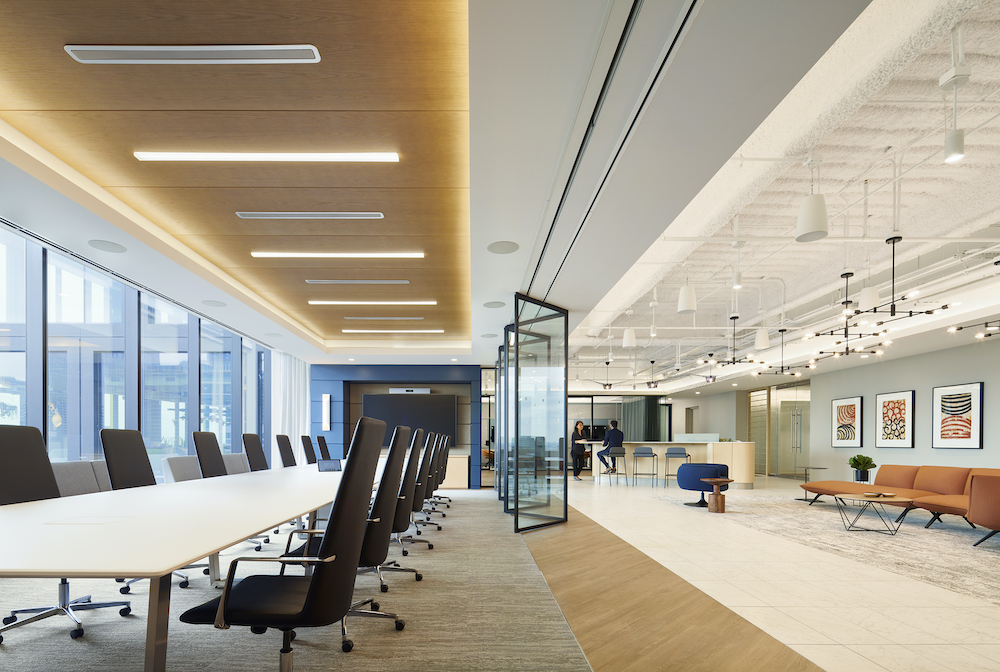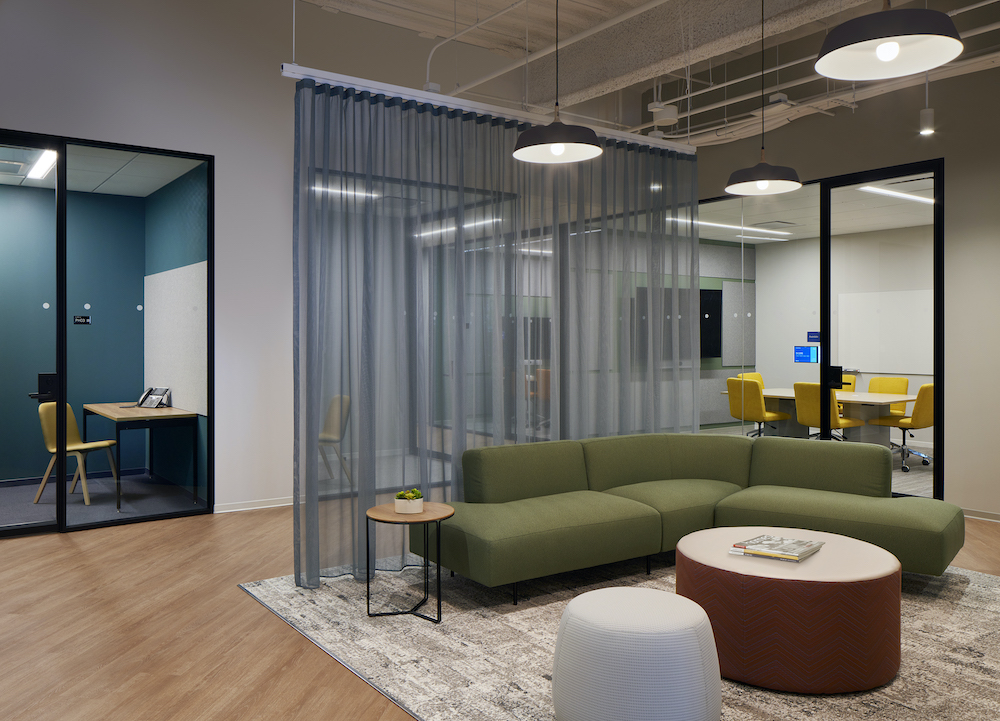Hannah Hackathorn of Unispace shares how growing recognition of the importance of employee mental health is fueling innovative new workplace design strategies.

Amid the ongoing pandemic, mental health awareness is gaining ground—including at work. While the long-term impacts of the pandemic on mental health are ongoing, the effects have permanently reframed the discussion around mental wellness in the workplace.
Over the last year, companies have been seeing more reason to create wellness-oriented office cultures. According to Mind Share Partners’ 2021 Mental Health at Work Report, mental health challenges among professionals rose from 2019 to 2021, with younger and historically underrepresented workers struggling most.
These struggles are caused in large by attrition, with employees increasingly leaving roles for mental health reasons, including job-related factors like overwhelming or unsustainable work. In 2021, 81% of Gen Zers and 68% of Millennials reported leaving companies for mental health reasons, compared with 75% and 50% respectively in 2019. Meanwhile, 91% of all respondents thought office culture should promote mental health.
It’s becoming clearer that prioritizing employee mental health supports employee and employer alike. In addition to inspiring employees to feel more connected to their organization, a mental health-friendly culture can help bring down the costs of absenteeism. Harvard researchers report medical and absenteeism costs fall by about $3.27 and $2.73 respectively for every dollar spent on wellness programs.
The growing understanding of the impact of mental health presents a unique opportunity to make crucial workplace improvements. What can organizations do to create workplace environments that nurture mental health and wellness?

Seven ways office design can support mental health
More than just a backdrop of everyday work, the physical space can play a key role in employee mental health when wellness is baked into the design. Following are seven ways companies can ensure their offices support mental health:
- Recognize and overcome the stigma associated with mental health. According to McKinsey research, 37% of employees with a behavioral-health condition said they’d avoid treatment to keep people from learning about it. Learn how the workforce perceives mental health and its role in their professional lives.
- Offer a mix of experiential, balanced space. The wellness-oriented workplace of the future offers the right balance of space for employees to feel comfortable and confident throughout the day, whether they’re collaborating or socializing, decompressing or focusing.
For example, offer spaces where people know it’s okay to be loud and talkative, areas for quiet work and/or for more introverted employees, and spaces for respite where people can go to unwind after a stressful meeting. In addition to the right mix of space types, consider sensory experience through color, texture, light, acoustic and scents throughout the workplace.
- Design for flexibility. Workplace choice and flexibility are big stress-busters and usually right at the top of employee wish lists. Give people the flexibility they crave by providing different working styles for different work modes and types of workers across functional roles.
- Prevent workplace loneliness with space to be social. Almost half of employees said they feel lonely at work, according to a CV Library To foster a healthy workplace, create spaces that contribute to company brand, culture, and connection.
To nurture a sense of shared purpose, start with thoughtful brand expression through the space. Go further by providing social areas and informal breakout spaces where people can connect and bond. For example, at The Terrace in New Zealand, BNZ turned the basement garage into a playground, complete with presentation screen, games tables, a bar, and cardio and events space.
- Improve the employee experience through environmental elements (noise, light and air). Environmental comfort—or lack thereof—has a direct impact on mental wellbeing. Give employees comfortable settings that alleviate noise, maximize air quality, and provide natural light and external views. For example, you might provide desk lightboxes for those affected by Seasonal Affective Disorder (SAD).
- Empower physical health. When employers support employees’ physical health, they’re supporting mental health, too. Offering a workout space or gym membership, for example, signals to employees they’re valued. Exercise is a way to give the brain a break and generates mood-boosting endorphins. To foster healthy eating and hydration, design should also include grab-and-go pantries and filtered water filling stations.
- Provide access to nature and other forms of stress reduction. The benefits of embracing biophilia are well-documented, yet many companies have only scratched the surface of what’s possible. Get creative as you explore ways to unlock roof spaces, gardens, balconies, or sunrooms. Bring the outside in with planters—they don’t just look nice, they improve air quality, too.
Include stress-free zones like meditation or yoga rooms with peaceful materials, palettes, and acoustics, where people can go to decompress during a busy day.
Champion wellness through culture, policy, and programming
In addition to the physical workplace, paying attention to work culture and policies ensures employees’ mental health is being prioritized.
- Leverage policy to let people work flexible hours and work from home when needed. This may include mental health days and support services like wellness apps, access to counseling, and a buddy system. For example, ING gives salespeople smartwatches and provides access to ex-Olympic athletes and psychological experts to help them eat, sleep, relax and move better. Additionally, training managers in mental health and mitigation strategies can help them communicate with employees going through hard times.
However, flexibility should go past mental health days and a hybrid in-office and WFH schedule. It’s also trusting your employees and providing them autonomy in how and when work gets done. Asynchronous work is also gaining traction as remote working becomes more common—allowing employees to work on their own time without the expectation of responding immediately ensures that employees have enough freedom to work when they need to.
- Free employees from the “always-on” culture. Roughly half of employees would rather clean their bathroom than catch up on more emails, but the work-from-home era has made 24/7 connectivity a way of life. Show employees their input and engagement is valued—as is their personal life.
Provide employees with stress relievers like passes for external meditation classes, or provide stress-busting journaling sheets, coloring books and games in break spaces.
- Prioritize and understand employee engagement. Are employees exhibiting signs of loneliness? In addition to paying attention to mental health cues, organizations can use real-time metrics to see how employees are engaging. Badge analysis, for example, can track user journeys throughout a workplace to better understand how people interact.
- Stoke employee pride by cultivating an inclusive, sustainable workplace. Give employees a workplace to be proud of by championing gender, racial and orientation parity and diversity in generational groups, personality types and working styles. Many workers also value building design that supports mental health such as WELL and sustainable building certificates like Greenstar and LEED.
- Consider the frictionless journey to the office. One of the main obstacles standing in between coming into the office and working remotely is the commute—there is a convenience and wellness factor tied with working from home. The ability for workers to reduce commute planning, stress and monetary investment is hard to compete with. While some of the wellness perks of an office can offset these stressors, perhaps consider how to provide a frictionless journey into the physical office, such as providing pre-paid transit cards for bus or train commuters, or staggering start times so employees who drive in can avoid rush hour traffic.

It’s time for a human-centric approach to mental health at work
The days of maxing out the productivity of employees are over, and space will no longer be measured by efficiency but by the wellbeing and behavior of people.
Organizations seeking to design a healthier, more human workplace must ensure they’re not just building for physical health—they’re considering the whole employee experience, including mental health and wellness too.


